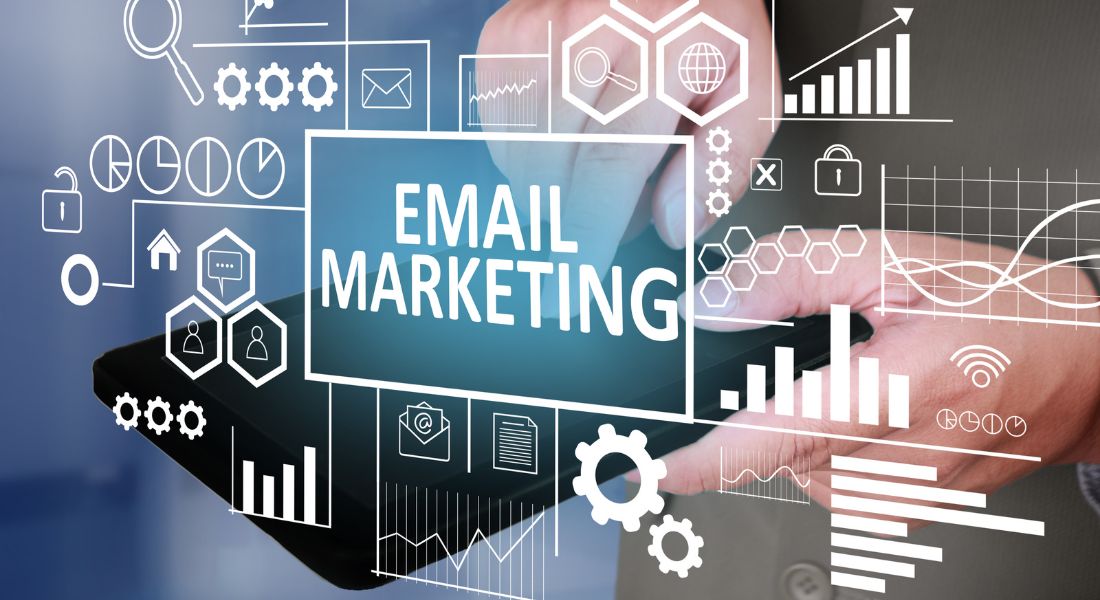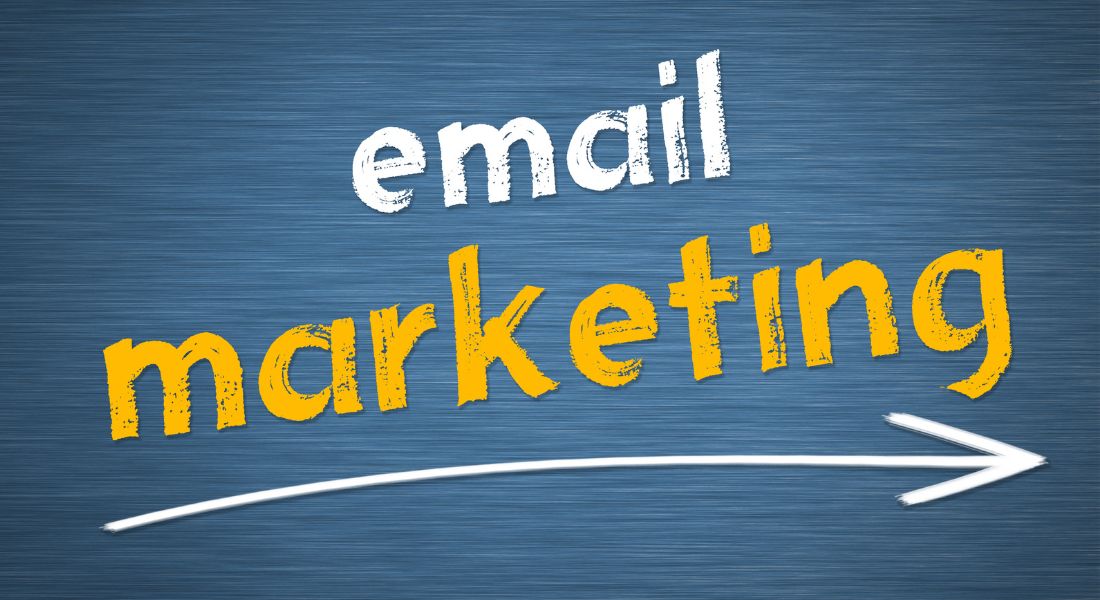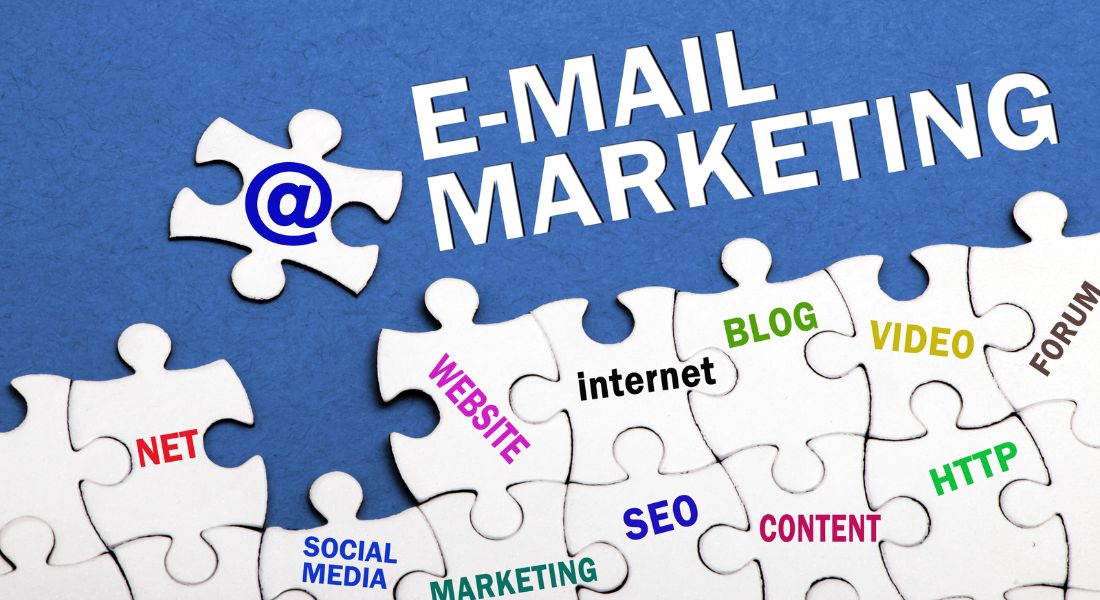Are you tired of your email marketing efforts falling flat, with low open rates and unsubscribes that make your heart sink? What if I told you there’s a way to not only grow your list but also keep your audience engaged and eager to hear from you? It’s about time we spill the beans on the secret sauce that successful businesses have been using for years! Unravel the mysteries of email marketing mastery, including layout and best practices, as we delve into our guide, packed with 10 essential tips that will transform your campaigns from electronic eyesores to inbox VIPs with improved deliverability and responsiveness! Say goodbye to dormant subscribers and hello to raving fans – let’s unlock the potential of email marketing together, one action, product, or team at a time.
Our email marketing guides cover a range of topics, including best practices for list building, crafting effective subject lines, designing eye-catching templates, and more. Additionally, our guides offer insights into the latest trends and tools to help you stay ahead of the competition, from responsive designs to improving deliverability. Whether you’re new to email marketing or looking to refine your strategy, our guides provide valuable insights to help you grow your business through effective email campaigns and maintain a strong connection with your contacts.
Post Contents
ToggleBuilding Your Email List
Building an email list is the foundation of any successful email marketing campaign. Having a large, engaged email list allows you to reach your audience with targeted content, promotions, and updates. But, how do you build that list in the first place? That’s where our expert team comes in to help.
One effective way to build your email list is by offering something exclusive and valuable in exchange for opt-ins. Consider offering a free ebook, white paper, or discount code to incentivize sign-ups. For example, if you’re a clothing retailer, offer a discount on the first purchase when customers sign up for your email newsletter. People are more likely to provide their email address if they know they’ll get something out of it.
Another strategy is to use pop-up forms on your website to capture visitor’s contact information. With a well-timed pop-up that offers something valuable like an ebook or discount code, you can significantly increase opt-ins. Additionally, make sure the pop-up form has an attractive layout and is easy to complete with only necessary fields, such as name and email address. This will minimise friction and make the sign-up process as simple as possible, following best practices.
Building an email list is a lot like planting seeds in a garden. You have to sow them carefully and consistently over time for them to grow into a bountiful harvest. As long as you keep nurturing the relationship with regular newsletters or promotions, your subscribers will continue to engage with and share content from your brand.
Now that we have covered some effective ways to build your email list, let’s explore how to get opt-ins via email and prompt your audience to take action.

How to Get Opt-ins via Email
Email marketing is all about connecting with people who are interested in what you have to offer. The key is finding those people who want to hear more from you and giving them a reason to opt-in, enhancing the chances of them becoming loyal customers to your product.
One of the most effective ways to get opt-ins via email is by offering “lead magnets”. Lead magnets are pieces of content, such as webinars or white papers, that offer high value to your audience. By providing something that your audience finds valuable, they are more likely to opt-in to your list and become part of your team’s contacts.This strategy works especially well if your lead magnet addresses a pain point or problem your target market faces. By creating a series of marketing emails, you can guide your readers through the steps required to resolve their issues, eventually fostering relationships and showcasing the value of your service.
Another strategy is to leverage your existing email list and encourage subscribers to forward your emails and share them on social media. If you have an engaged subscriber base, they will appreciate the content you’re sending them and might be willing to take an extra step by sharing it with others. By making it easy for subscribers to share your emails, incorporating personalised images and messages for each person, you’re extending the reach of your brand’s message and potentially reaching new audiences who are interested in signing up for your list.
While buying email lists may seem like a quick way to increase the size of your email list, it’s not a sustainable or effective practice. Not only is it almost always illegal under anti-spam laws, but purchased lists are often low quality and won’t provide good click rates or conversions.
Getting opt-ins via email is like creating a welcoming atmosphere at a house party – people are more likely to stick around if they feel comfortable and enjoy themselves. By providing valuable content and taking care of people’s needs, you can create an environment where people want to remain involved – just like how guests at a lively party stay longer because they are having fun.
Implementing these strategies will help you build an email list that’s both large and engaged. The right tactics will depend on your industry and audience preferences, but by experimenting with different techniques you’ll find what works best for yourself. Next, we’ll explore utilising social media and website sign-ups to increase email list growth.
Utilising Social Media and Website Sign-ups
Growing an email list is critical to the success of any email marketing campaign, and social media and website sign-ups are great tools for accomplishing this. By leveraging these channels, you can reach potential subscribers who are already interested in what you have to offer.
For example, let’s say you have a fitness blog and want to grow your email list. You could create a lead magnet – such as a free workout plan or healthy recipe book – and then promote it on social media. By doing so, you can attract individuals who are interested in fitness-related content to join your email list.
In addition to social media, your website is another important avenue for collecting email addresses. Consider strategically placing opt-in forms on key pages of your site, such as the homepage or blog posts. You could also create pop-ups that appear when visitors navigate to exit your site.
The effectiveness of social media and website sign-ups is supported by data. According to a study by eMarketer, 80% of online retailers use email sign-ups on their websites, with more than half finding them either effective or very effective at generating new leads.
Furthermore, social media platforms like Facebook and Twitter have proven effective at driving traffic back to websites. In fact, data from Pew Research Centre indicates that 74% of adult Facebook users visit the site daily, providing ample opportunity to share links to opt-in landing pages.
Think of it like casting out a fishing net: the larger your net, the more opportunities you have to catch fish. By using the strategies mentioned above, you can grow your email list consistently and create a solid foundation for successful email marketing campaigns.By leveraging social media, website sign-ups, and top email marketing software, in addition to other tactics for growing your email marketing list, you increase the size of your “net” and give yourself more chances to reel in subscribers. Utilising an email service provider with customizable email templates can further enhance the user experience.
Email Marketing Strategy and Tactics
Once you’ve built your email list, it’s important to develop a strategy for how you’ll engage your subscribers. Email marketing is an incredibly effective tool for nurturing leads and driving conversions, but it requires more than just sending out occasional newsletters. You should include various elements in your emails that capture your subscribers’ attention and cater to their interests.
A study by Campaign Monitor found that segmented email campaigns had a 14.31% higher open rate and 100.95% higher click-through rate compared to non-segmented campaigns. By tailoring your emails to specific segments of your list – such as based on interests or location – using email templates, you can deliver more targeted messaging that resonates with subscribers.
However, it’s important not to over-segment your list at the expense of sending regular, valuable content. While segmentation can improve engagement rates, it should never come at the expense of volume.
It’s also crucial to consider the importance of timing when sending emails. Sending emails at the right time can have a significant impact on engagement rates. Consider factors like time zones and subscriber behaviour patterns when scheduling your sends.
For instance, if you know that a large portion of your subscribers are located in a specific region, you might want to send emails during their local business hours for optimal engagement. Similarly, if you find that many subscribers tend to open emails on mobile devices during their morning commutes, you could schedule your campaign sends accordingly.
Finally, don’t overlook the importance of creating engaging content in order to retain subscribers over time. Compelling subject lines and well-crafted messages are essential for grabbing attention and keeping people interested in your brand. Be sure to update your email templates with captivating content regularly.
Think of it like dating: in order for a relationship to last, there has to be mutual interest and effort put in from both parties. Without engaging content, timely outreach, and a well-designed version of each page, even the most robust email list won’t deliver long-term results.

Developing an Email Marketing Strategy
Developing an email marketing strategy is a crucial step in creating impactful and effective email campaigns. A strategy will help you to define your goals, plan your content, and optimise your campaigns for better engagement and ROI. With that being said, let’s dive into some helpful tips for developing an effective email marketing strategy.
Firstly, it’s important to understand the audience that you’re targeting with your campaigns. One way to do this is by creating a buyer persona or customer profile. This involves researching and gathering data on your target audience such as demographics, interests, preferences, and pain points. By understanding your audience, you can tailor your content and messaging to resonate more effectively with them.
Secondly, it’s important to define clear objectives for your email marketing campaigns. What do you hope to achieve from sending out emails? Whether it be increasing sales, boosting engagement or generating leads, each campaign should have a defined goal.This will help guide your content creation and ensure that you’re delivering value to your subscribers while also working towards your overall business objectives. With proper permission, monitoring the behaviour of your subscribers can give you a variety of examples to draw from when crafting your content. This idea can ultimately lead to better engagement and catered content for each individual on your mailing list.
There are many different types of email campaigns that you can send out depending on the objectives you’ve set out. Some common types of campaigns include newsletter emails, promotional emails, welcome emails, abandoned cart emails, and re-engagement emails. While each type has its own purpose and benefits, it’s important to strike a balance between promotional messages and educational content so that your subscribers don’t feel overwhelmed or bombarded with sales pitches. Remember to include a mix of events or updates in your newsletter to keep your subscribers engaged and informed.
In terms of frequency, it’s important to consider how often you’ll be sending out emails – too many emails can lead to unsubscribes while too few may cause your subscribers to forget about you altogether. A good rule of thumb is to start by sending one newsletter per week supplemented by one promotional campaign per month.
- In 2021, the average open rate for email marketing campaigns across all industries was roughly 21%, which highlights the importance of creating engaging subject lines and keeping a quality email list (Campaign Monitor).
- A study conducted by GetResponse in 2020 found that personalised subject lines generate an average open rate of 27% higher than generic subject lines, emphasising the benefits of utilising personalization in email marketing.
- Research by Statista shows that in 2023, the number of global e-mail users is expected to reach approximately 4.4 billion, illustrating the ongoing significance of email marketing as a reliable channel for businesses to reach and engage with their audience.
Segmenting Your List for Better Engagement
Segmenting your email list simply means dividing your subscriber base into smaller groups based on shared characteristics such as demographics, location, interests, or purchase history. This allows you to tailor your messaging to specific groups, thereby increasing the relevance and engagement of your emails. Here are some tips for effective segmentation.
Firstly, consider demographic data such as age, gender, and location when segmenting your list. This will allow you to create more personalised messages that speak directly to the interests and needs of your audience.
Secondly, look at behavioural data such as past purchases, website interactions, and email opens/clicks in order to segment subscribers based on their stage in the customer journey. For example, you might want to target customers who have recently made a purchase with a post-purchase survey or promote related products to those who have viewed certain items on your website.
While segmentation provides many benefits, it’s important not to go overboard with too many subgroups. The goal is to keep things manageable and focus on delivering relevant information to your subscribers without getting bogged down in overly complex campaigns.
Another way to think about it is like sorting laundry – attempting to wash everything together may seem efficient, but it ultimately results in a less effective cleaning job. By separating dirty clothes by colour, material type, or dirt level, we’re better able to clean them efficiently and with better results.

Creating Engaging Email Content
As an email marketer, your goal is to get the recipient to open and engage with your emails. This is why creating engaging email content is crucial to the success of your campaign. Here are some tips to help you create content that resonates with your audience.
One way to create engaging email content is by personalising it. Personalization makes the recipient feel like they are receiving a message from a friend or colleague and not just another promotional email. For instance, using their name in the greeting, or incorporating information that you know about them based on their profile can make them feel special.
Another way to create engaging content is by using attention-grabbing headlines and subheadings. Think of your subject line as a movie trailer, its primary purpose should be to grab attention and entice the reader to open the email. Use strong verbs and adjectives to highlight what’s inside, and if appropriate, include numbers or statistics.
Think of your email content like a story – it should have a clear beginning, middle, and end. Be sure that there’s coherence between the headline and subheading and the interior text. Also, ensure that your story unfolds in a structured manner that leads up to a climax towards the end.
Some argue that having shorter emails that can be skimmed through will lead to better engagement than lengthy ones. While this might work for certain audiences or circumstances- such as when sending out newsletters- it’s not suitable all the time. Some marketing campaigns need more explanation; you can’t accomplish this with fewer words. Therefore, when crafting lengthier emails, use formatting techniques such as bullet points, headings, bolding text, spacing it well.
Now that we have covered how to create engaging email content let us turn our focus towards crafting impactful subject lines and messages.
Crafting Impactful Subject Lines and Messages
Subject lines are the most crucial part of your email, as they are the gateway to who can view them. As such, coming up with impactful subject lines requires a lot of effort and attention. Here’s how:
One way to craft an impactful subject line is by keeping it short, sweet, and descriptive. Studies show that open rates for emails containing fewer than 50 characters have a higher probability of getting opened. The recipient may lose interest if your subject line is too long or vague, but this will not happen if you help them understand what the email is about in one sentence.
Another way to make your subject line impactful is by conveying a sense of urgency or scarcity. This tactic encourages the recipient to open the email immediately because they feel like they’ll miss out on important information or limited-time offer if they don’t act fast.(For instance: “24-hours Left” or “Limited Spots Available”)
Think of your subject line as a storefront sign: it should be clear, attractive, relevant, and exciting enough to get people inside. Your primary goal should be to grab their attention in a few words such that they’re compelled to read more.
On the flip side, some marketers tend to use clickbaity headlines as their subject lines that are likely to annoy or disappoint the recipients because it doesn’t live up to their expectations. Ensure that your content matches your headline because misleading titles decrease trust for your brand.
Maximising Automation and Analytics
When it comes to email marketing, automation and analytics are essential for success. Email automation can help you streamline your campaigns, while analytics offer insights into how your subscribers interact with your emails. By understanding how to maximise automation and analytics, you can take your email marketing to the next level.
For instance, email automation can cut down on the time and effort required to send out emails manually. You can set up automated triggers based on certain actions, such as when a subscriber signs up for your newsletter or makes a purchase on your website. This allows you to stay in touch with your subscribers without having to manually send out each email, saving you substantial amounts of time in the process.
Additionally, automation allows you to personalise your emails according to the preferences of individual subscribers. By segmenting your list based on different criteria such as geographic location, past behaviour or interests, you can tailor content specifically for those groups rather than sending out generic communications that may not resonate with everyone on your list. According to research conducted by Epsilon Email Institute, segmented campaigns generated an open rate that was 14.32% higher than non-segmented campaigns.
Some marketers argue that automating emails might lead to losing the human touch of communication and reduce engagement rates, but research studies reveal the opposite is true. By providing recipients with targeted communications designed around individual preferences and behaviour patterns, automation increases open rates and decreases unsubscribe rate of customer communication.
An effective way of approaching automation is comparing it to hiring a full-time employee dedicated solely to managing email campaigns. You would not hire someone who sends out generic messages without tracking success rate or personalising content for different audiences. Automated content personalization acts like such employees since they send personalised messages accurately and track data too.
Streamlining Campaigns with Email Automation Tools
Email automation tools can help streamline the entire process of email marketing campaigns and make them more efficient and effective. Such tools offer a range of features that can help you manage your list, create engaging content and analyse results. By utilising these tools, you will be able to streamline your campaigns and optimise your email marketing strategy.
One example of a great automation tool is ConvertKit, which allows you to create customised opt-in forms that capture leads and send automated welcome emails. This user-friendly tool enables you to tailor messages in line with customer behaviour patterns for maximum optimisation. You can also segment your subscribers into different groups according to their interests, activity on your website or demographics.
By taking advantage of automation tools like ConvertKit to streamline your campaigns, you have good chances of increasing open rates, click-through rates and ultimately conversion rates through effective targeting.
One thing to note while using email automation tools is not relying too much on the pre-existing templates without customising them yourself. It is important to personalise messages and understand that every group has unique preferences.
Streamlining email campaigns using the right tools makes it easier than ever before. It’s like having a well-oiled machine doing most of the work effectively, smoothly running at optimum speed. The speed being how fast it takes for potential customers to convert from recipients of your messages to loyal customers who engage with content regularly.

Answers to Common Questions with Detailed Explanations
Can email marketing guides help increase engagement rates and conversions?
Absolutely! Email marketing guides can be extremely helpful in increasing engagement rates and conversions. These guides offer tips and best practices for crafting effective emails that resonate with your audience, as well as strategies for growing your email list.
Here are a few statistics to back up the effectiveness of email marketing:
– According to Campaign Monitor, email marketing has an ROI of $44 for every $1 spent.
– A study by Econsultancy found that email is considered the most effective marketing channel for customer retention, ahead of social media and search engine optimisation.
– HubSpot reports that personalised emails have a 29% higher open rate and a 41% higher click-through rate than non-personalised ones.
By following the advice in email marketing guides, businesses can improve the content and design of their emails to make them more engaging and relevant to their subscribers. They can also learn how to segment their email lists and target specific groups with personalised messaging, which can drive conversions.
Of course, it’s important to keep in mind that no single strategy or tactic will work for every business. However, by using email marketing guides as a starting point and testing different approaches over time, businesses can find what works best for them and achieve great results.
What are the best practices for implementing strategies outlined in email marketing guides?
The best practises for implementing strategies outlined in email marketing guides include building a targeted list of subscribers, personalization, segmenting your audience, and optimising your email content for mobile devices.
According to data from Mailchimp, segmented email campaigns have a 14.31% higher open rate than non-segmented campaigns. This means that sending personalised and targeted emails to specific segments of your audience can increase engagement and ultimately drive more conversions.
Additionally, optimising your email content for mobile devices is crucial in today’s digital landscape. According to a study by Litmus, 46% of all email opens occur on a mobile device. So, making sure that your emails are easy to read and navigate on a small screen is essential to engage with users who check their mailbox on the go.
It’s important to note that while implementing these strategies can be effective, they should also be paired with consistent and relevant content. As the saying goes, “content is king.” No matter how well you structure your emails or how targeted your list is, if the content isn’t valuable or engaging for the recipient, they won’t convert.
By following these best practises and consistently providing valuable content, email marketing can be a powerful tool for growing your business or organisation.
What specific topics are covered in email marketing guides?
Email marketing guides cover a range of topics including list growth, segmentation, personalization, subject lines, content creation, email design, timing and automation. According to a report by Campaign Monitor, segmented campaigns can result in a 760% increase in revenue.
Email list growth is a crucial topic covered in email marketing guides as having an engaged email list is crucial for the success of any campaign. According to Hubspot, companies see an average ROI of $42 for every dollar spent on email marketing.
In addition to this, creating personalised and targeted emails is another key area that these guides explore. Personalised emails have been shown to have a 29% higher open rate as reported by Epsilon Email Institute.
The importance of email design and timely delivery cannot be overstated either. A report by Litmus found that on average, subscribers spend only 11 seconds reading an email. Thus it becomes essential to grab their attention with a visually appealing design and make sure the email gets delivered at the right time.
Ultimately, there’s no denying the fact that email marketing remains one of the most cost-effective marketing channels for businesses of all sizes. By following the tips and tricks outlined in these guides businesses can create effective email campaigns that drive engagement and conversions.
How do email marketing guides differ for various industries or types of businesses?
Email marketing guides can differ for various industries or types of businesses due to the unique needs and preferences of their target audience. For example, the email marketing tactics that resonate with a millennial audience may not work as well with baby boomers.
Another factor to consider is the sales cycle of the business. A business with a shorter sales cycle, such as an e-commerce store, may require more frequent and promotional emails than a B2B company with a longer sales cycle.
Furthermore, the type of content being promoted also plays a role in determining the best email marketing approach. A business promoting fashion or lifestyle products may benefit from more visually appealing and creative emails, while a financial services company may require more informative and data-driven emails.
According to Mailchimp’s 2021 Email Marketing Benchmarks report, different industries have varying open rates, click-through rates, and unsubscribe rates. For example, the average open rate for emails in the food and beverage industry was 24.62%, while it was only 15.68% for emails in the government sector.
Therefore, it is important to tailor email marketing guides to the specific industry or type of business to ensure maximum engagement and conversions from email campaigns.
Are there any free email marketing guides available online?
Yes, there are many free email marketing guides available online that can help businesses of all sizes to improve their email marketing efforts. These guides offer valuable insights, tips and techniques on how to build a successful email list, increase engagement, and drive revenue through email marketing.
According to a recent study by HubSpot, companies that use email marketing generate 50% more sales-ready leads at 33% lower cost than those that do not use this strategy. Yet, despite the proven effectiveness of email marketing, only 12% of businesses have an advanced understanding of how to use it effectively.
Fortunately, there are several great resources available online that can help businesses get started or improve their current email marketing campaigns. Some popular free resources include:
- MailChimp’s Email Marketing Field Guide – A comprehensive guide filled with industry best practises for creating and sending effective emails.
- Constant Contact’s Guide to Email Marketing – A step-by-step guide with easy-to-follow instructions on how to create and manage an effective email campaign.
- The Ultimate Guide to Email Marketing from HubSpot – A detailed guide that includes tips on list building, lead generation, segmentation and more.
In summary, while there is no shortage of paid options available for email marketing education, there are plenty of excellent free resources available as well. With a bit of research and effort, businesses can leverage these resources and improve their email marketing campaigns significantly.





